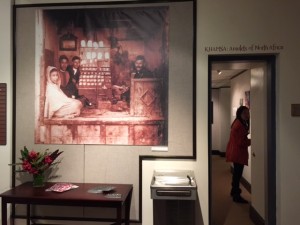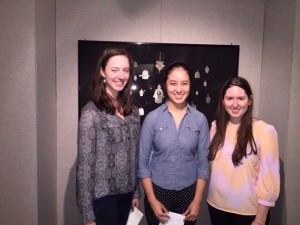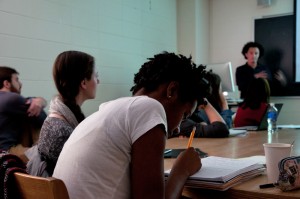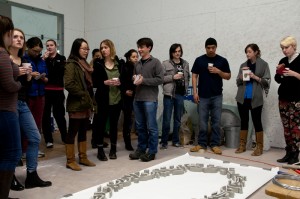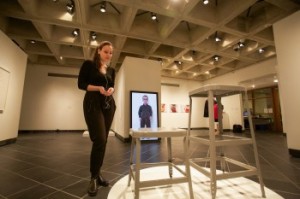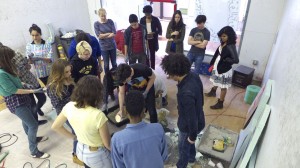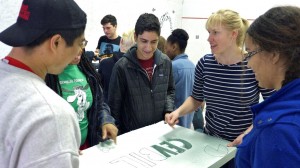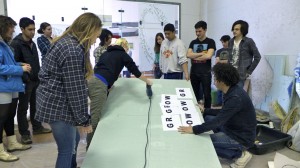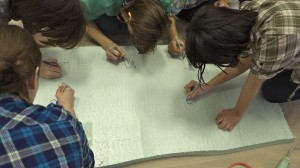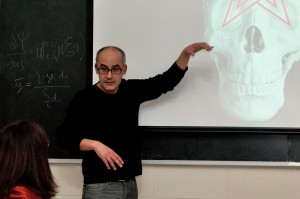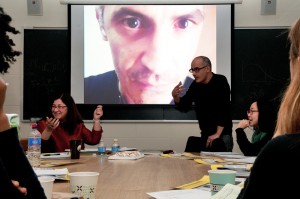It’s mid-November now and the exhibit Memory || Place || Desire: Contemporary Art of the Maghreb and Maghrebi Diaspora has long been installed and viewed my many guests. Opening day, Friday, October 24 came with a gallery space overflowing with spectators.
The opening began as Koshland Director of the John B. Hurford ’60 Center for the Arts and Humanities, Laura McGrane, introduced head curator, Professor Carol Solomon along with the student curators.

Next to speak was Professor Solomon, who explained the exhibition as one that aimed to illustrate the diverse types of art that come out of the Maghreb and that guests should leave the exhibit realizing that there is not one type of art coming from this region. After this introduction, Professor Solomon turned the guests to the student curators, who guided the crowd through the gallery and spoke for a few minutes about pieces that they studied in depth the previous year.
The exhibit opening has come and gone, but Memory || Place || Desire: Contemporary Art of the Maghreb and Maghrebi Diaspora will remain until December 14, 2014. Tours will run every Thursday at 4:00pm for the duration of the show.


